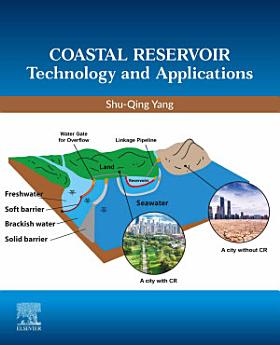Coastal Reservoir Technology and Applications
ກ.ພ. 2022 · Elsevier
ປຶ້ມອີບຸກ
652
ໜ້າ
family_home
ມີສິດ
info
reportບໍ່ໄດ້ຢັ້ງຢືນການຈັດອັນດັບ ແລະ ຄຳຕິຊົມ ສຶກສາເພີ່ມເຕີມ
ກ່ຽວກັບປຶ້ມ e-book ນີ້
Coastal Reservoir Technology and Applications presents the analyses showing that the world is not running out of water, but water is running out of river mouths—we need to work to harness this resource. Compared with inland water storages and desalination technology, coastal reservoirs are a nature-based water solution without disturbing the environment. This book mainly answers the questions of what the coastal reservoir technology is, where we should construct coastal reservoirs, and how to supply sufficient, high-quality and affordable water to the world with minimum environmental/social impacts. Chapter 1 reviews modes of water resources development in the history along with current problems and reasons. Chapter 2 discusses the definition of coastal reservoirs, its classifications and applications, and the SPP/downstream water management strategy. Other chapters analyse water crisis in every continent, as well as their water solutions. The possible coastal reservoir for each major river is suggested as well. Without freshwater, no one can survive. Likewise, without sufficient, high-quality and affordable freshwater, no community can achieve sustainable development. However, water is also a killer when it is too much (floods), too dirty (pollution), and too turbid. Different from other books, this resource shows how to solve these water problems. Coastal reservoirs and SPP strategy are suggested to develop floodwater in a safe way in coastal and inland regions, respectively. Solution of water-food-energy-ecosystem nexus needs a paradigm shift from upstream to downstream water management, i.e., from mountainous dams to coastal reservoirs, which conserves the precious, clean freshwater in seawater environment. - Provides an analysis of every large river in the world to help users determine the feasibility of using a coastal reservoir in each location - Presents a global coverage, including case studies where this technology has already been implemented - Authored by a world expert on coastal reservoirs, with several patents in the area
ກ່ຽວກັບຜູ້ຂຽນ
Shu-Qing Yang obtained his PhD from Nanyang Technological University, Singapore, and is currently Associate Professor in the School of Civil, Mining and Environmental Engineering at the University of Wollongong, NSW, Australia. Prior to this appointment, he was Professor and Chair Professor in Korea Maritime University and South China University of Technology, respectively. His research interests include fluid mechanics, hydraulics, sediment transport, drag-reduction with polymer additives, and water resources engineering. He was a chief investigator for sedimentation problems in the Three Gorges Dam, one of the largest dams in the world. He also helped the initiation of coastal reservoirs in many countries including Shanghai, China—one of the megacities with severe water shortage caused by pollution.
ໃຫ້ຄະແນນ e-book ນີ້
ບອກພວກເຮົາວ່າທ່ານຄິດແນວໃດ.
ອ່ານຂໍ້ມູນຂ່າວສານ
ສະມາດໂຟນ ແລະ ແທັບເລັດ
ຕິດຕັ້ງ ແອັບ Google Play Books ສຳລັບ Android ແລະ iPad/iPhone. ມັນຊິ້ງຂໍ້ມູນໂດຍອັດຕະໂນມັດກັບບັນຊີຂອງທ່ານ ແລະ ອະນຸຍາດໃຫ້ທ່ານອ່ານທາງອອນລາຍ ຫຼື ແບບອອບລາຍໄດ້ ບໍ່ວ່າທ່ານຈະຢູ່ໃສ.
ແລັບທັອບ ແລະ ຄອມພິວເຕີ
ທ່ານສາມາດຟັງປຶ້ມສຽງທີ່ຊື້ໃນ Google Play ໂດຍໃຊ້ໂປຣແກຣມທ່ອງເວັບຂອງຄອມພິວເຕີຂອງທ່ານໄດ້.
eReaders ແລະອຸປະກອນອື່ນໆ
ເພື່ອອ່ານໃນອຸປະກອນ e-ink ເຊັ່ນ: Kobo eReader, ທ່ານຈຳເປັນຕ້ອງດາວໂຫຼດໄຟລ໌ ແລະ ໂອນຍ້າຍມັນໄປໃສ່ອຸປະກອນຂອງທ່ານກ່ອນ. ປະຕິບັດຕາມຄຳແນະນຳລະອຽດຂອງ ສູນຊ່ວຍເຫຼືອ ເພື່ອໂອນຍ້າຍໄຟລ໌ໄໃສ່ eReader ທີ່ຮອງຮັບ.




